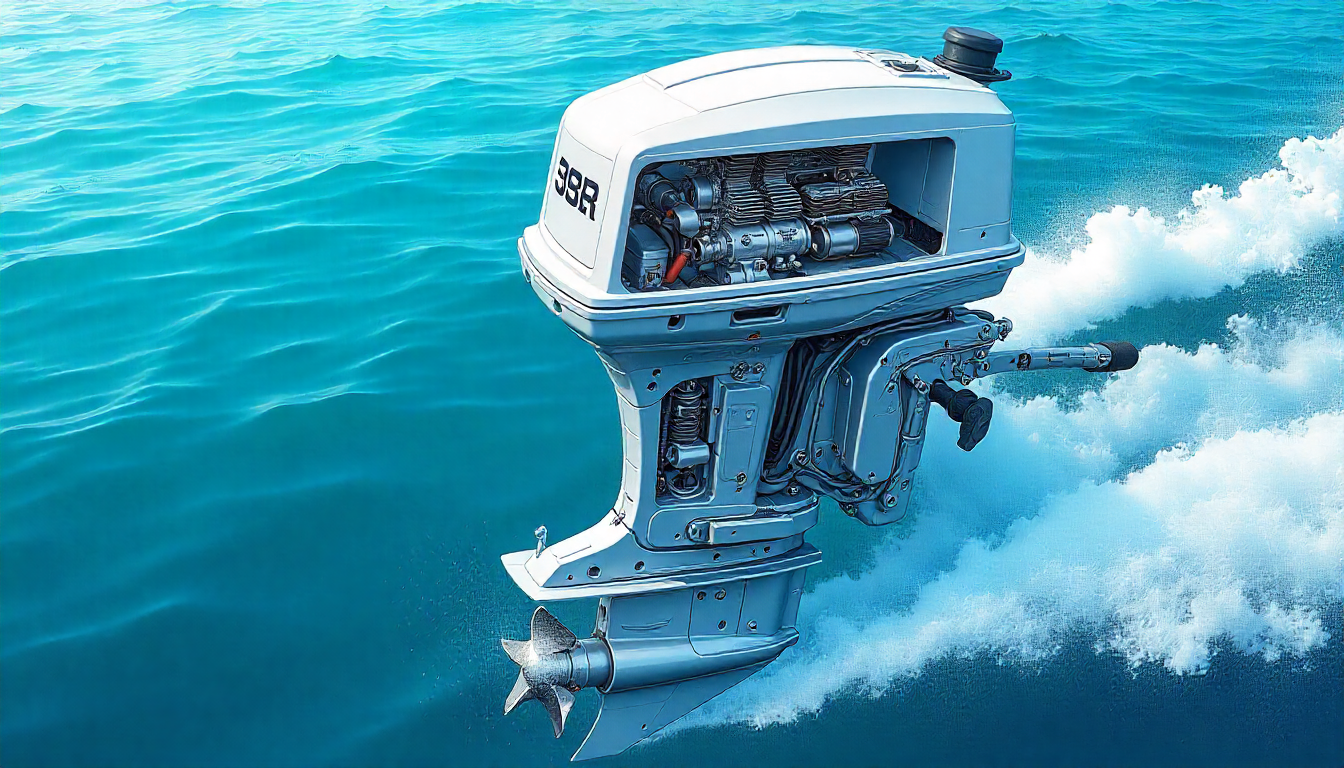Outboard motors have been essential to boating for more than a century, offering excellent performance and versatility. The outboard motor system combines several mechanical, electrical, and hydrodynamic components to transform fuel into thrust. Since it operates as a complete, portable power source, it is one of the most popular choices for powering boats. When you understand how it works, you can operate it more effectively and maintain it for years of reliable service.
Understanding the Outboard Motor System
The outboard motor system integrates the outboard engine, outboard lower unit, and outboard powerhead into a compact design. This arrangement makes the system portable and relatively easy to service. In contrast to inboard engines, every unit of an outboard can be removed without dismantling the boat’s structure, which saves time and cost.
Additionally, this design allows you to upgrade, repair, or replace the motor with minimal disruption. Because of these advantages, it remains a preferred option for both recreational and commercial boaters.
Main Components of the Outboard Motor System
Every outboard motor consists of different parts, each with a critical role in generating power, transferring it to the propeller, and ensuring smooth operation.
1. Outboard Powerhead – The Engine’s Heart
The outboard powerhead contains the engine block, pistons, crankshaft, and combustion engine system. This section converts the fuel-air mixture into rotational force.
- Engine Block: Houses the cylinders and provides strength for the engine.
- Pistons and Crankshaft: The pistons move up and down, driving the crankshaft to generate power.
- Fuel Delivery: The fuel tank, fuel pump, and injectors or carburetor work together to supply the right mix.
A four stroke outboard completes four phases—intake, compression, power, and exhaust—in every cycle. This design generally delivers better fuel economy and longer maintenance intervals than a stroke outboard.
2. Midsection and Outboard Housing
The midsection links the outboard powerhead to the outboard lower unit. It holds the exhaust system, channels cooling water, and secures the motor to the transom.
Manufacturers design this section to minimize vibration and noise, which improves comfort on board. Since it also contains steering pivots, the midsection allows the outboard motor to turn smoothly when maneuvering.
3. Outboard Lower Unit – Delivering Power to the Propeller
The outboard lower unit transfers rotational energy from the crankshaft to the prop shaft. Inside, it contains gears, bearings, and the water intake.
- Forward Gear and Reverse Gear: Let you control boat direction.
- Prop Shaft and Bearings: Provide efficient power transfer with minimal friction.
- Water Intake: Feeds the cooling system, which is vital for engine health.
Because the motor transmission system is housed here, precise engineering ensures smooth shifting and consistent thrust.
How the Outboard Motor System Works
The process begins in the outboard powerhead. Here, the combustion engine burns the fuel-air mixture, forcing the pistons down. Their movement rotates the crankshaft, which transfers energy down through the midsection.
Gears in the outboard lower unit adjust torque and speed before spinning the prop shaft. As the propeller pushes water backward, the boat moves forward. At the same time, the cooling water system regulates temperature, and the exhaust system vents gases.
This entire system works together seamlessly, enabling you to control acceleration, direction, and speed with precision.
Fuel and Combustion Process
The fuel tank supplies gasoline to pumps and filters, which then feed it into the carburetor or fuel injectors. In a four stroke outboard, each of the four phases—intake, compression, power, and exhaust—plays a role in producing smooth, efficient operation.
A stroke outboard design completes its cycle in two piston movements. While this gives it a higher power-to-weight ratio, it typically uses more fuel than a four-stroke design.
Cooling and Lubrication Systems
The cooling system draws water from the surrounding environment via the lower unit. It circulates through the engine block and out through the exhaust, keeping temperatures safe for continuous operation.
Lubrication is equally critical. Engine oil coats moving parts, such as the prop shaft, crankshaft, and bearings, to reduce friction. Without proper lubrication, these components would wear quickly, leading to costly repairs.
Outboard Motor Transmission System
The outboard motor transmission system controls the shift between forward, neutral, and reverse. This system is also responsible for converting high-speed engine rotation into the correct torque for the propeller.
Because the motor transmission system must handle varying loads, manufacturers design it with durable gears, seals, and bearings for long service life.
Advantages of the Outboard Motor System
- Portability: Entire outboard motor can be detached and stored.
- Versatility: Suitable for fishing boats, leisure craft, and high-speed vessels.
- Performance Range: From small outboard motors for tenders to high horsepower models for offshore use.
- Fuel Efficiency: Modern four stroke outboard designs deliver better fuel economy and lower emissions.
Maintenance Tips for Longevity
- After saltwater use, flush the cooling system with fresh water to prevent corrosion.
- Inspect the fuel tank and lines for cracks or leaks.
- Check the lower unit oil for signs of water intrusion.
- Replace spark plugs as needed for consistent ignition.
- Change engine oil and filters according to manufacturer guidelines.
By following these steps, you extend the life of your outboard motor and maintain peak performance.
Conclusión
The outboard motor system is a sophisticated yet user-friendly way to power a boat. Its different parts, from the outboard powerhead to the outboard lower unit, work together to provide reliable thrust, steering, and efficiency.
When you understand each component, you gain the ability to troubleshoot issues, perform basic maintenance, and choose the right motor for your needs. With proper care, an outboard motor will serve you reliably for years, making every trip on the water safe and enjoyable.

 Outboard Motor System Explained – Complete Guide on How It Works">
Outboard Motor System Explained – Complete Guide on How It Works">
